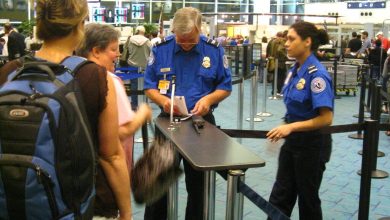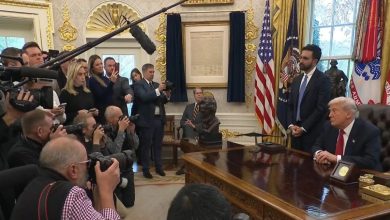Trump’s Economic Approval Hits Record Low Amid Rising Costs and Prolonged Government Shutdown
A new Quinnipiac poll shows just 38% of Americans approve of Trump’s handling of the economy as inflation, job cuts, and political gridlock fuel growing public concern.

President Donald Trump has recorded his lowest approval rating on the economy since taking office, according to a new Quinnipiac University poll released Wednesday, amid growing concerns over rising living costs, a slowing job market, and the ongoing federal government shutdown.
The poll found that only 38% of Americans approve of Trump’s handling of the economy, while 57% disapprove, and 5% offered no opinion. This marks the lowest economic approval rating for Trump since February 2017, just months after his first inauguration.
The survey, which included 1,327 registered voters across the United States between October 16 and 20, has a margin of error of ±3.5 percentage points.
Economic Concerns Deepen Amid Government Shutdown and Rising Costs
The results come at a politically and economically turbulent moment as Americans face steadily rising prices, declining job opportunities, and a government shutdown now entering its fourth week after Congress failed to pass a federal budget. Analysts say voters’ assessment of economic performance is among the most decisive factors influencing a president’s re-election prospects — especially with the 2026 midterm elections approaching.
Tim Malloy, a political analyst at Quinnipiac University, said: “The nearly 20-point gap between approval and disapproval of Trump’s economic performance marks a low point for a president who promised strong prosperity.” He added that the figures reflect “growing anxiety among voters about economic and living conditions.”
The poll also showed that 45% of respondents blame Republicans in Congress for the government shutdown, while 39% blame Democrats, and 11% believe both parties share equal responsibility.

Political Gridlock Deepens Economic Concerns
On Truth Social, Trump lashed out at Democrats, saying they “shut down the government during one of America’s most successful economic periods, with record stock markets,” asserting he is ready to negotiate “once they allow the government to reopen.”
In response, Senate Democratic Leader Chuck Schumer sharply criticized Republicans, accusing them of “celebrating on the White House lawns while millions of Americans suffer through the longest shutdown in modern history.”
Mark Williams, a lecturer at Boston University’s School of Management, told Newsweek that “Trump’s declining approval stems from rising layoffs, growing unemployment, persistent inflation, and a government shutdown that shows no sign of ending.”
This downturn comes as economists warn that continued political gridlock between Republicans and Democrats over the federal budget could erode consumer and business confidence, deepening the public sense that “the country is moving in the wrong direction,” as several recent surveys indicate.



